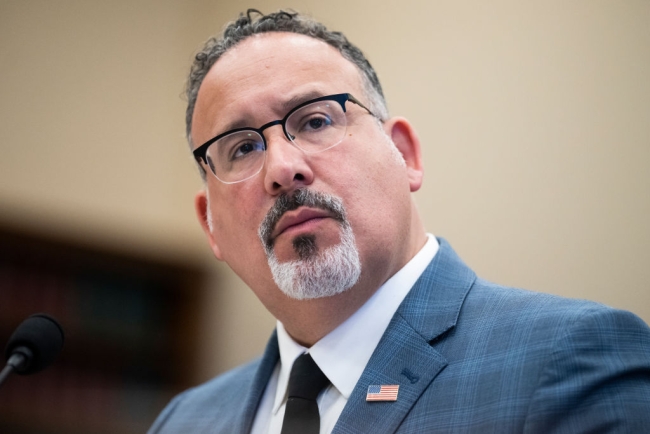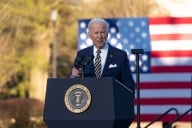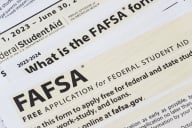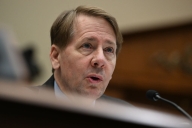You have /5 articles left.
Sign up for a free account or log in.

Education Secretary Miguel Cardona criticized House Republicans’ plan to pair a debt limit increase with spending cuts and other conditions.
Tom Williams/CQ-Roll Call Inc. via Getty Images
Education Secretary Miguel Cardona on Wednesday blasted the House Republicans’ proposed plan to lift the debt ceiling. The plan would block the administration from forgiving student loans and calls for cuts in federal spending.
“Speaker [Kevin] McCarthy declared that he will force a catastrophic default and plunge America into recession unless he can claw back school relief dollars and prevent millions of hardworking Americans—including over 83,000 borrowers in his own district—from getting the student debt relief they need coming out of the pandemic,” Cardona said in a statement.
Student debt relief advocates slammed the plan, and higher education lobbyists warned that the spending cuts would be devastating for students, colleges and universities.
Speaker Kevin McCarthy’s plan would raise the county’s debt limit by $1.5 trillion and also cut discretionary spending to fiscal year 2022 levels and limit future budget growth to 1 percent a year. The proposal is not likely to move forward in the Senate, even if it passes the narrowly divided House, but essentially serves as McCarthy’s opening offer in negotiations with President Biden over the debt ceiling.
The Treasury Department is currently taking “extraordinary measures” to keep the country from defaulting on its debt.
“It’s a shame for students and working families across the country that Republican lawmakers, many of whom benefitted from hundreds of thousands of dollars in small business loan forgiveness, continue to fight hypocritically to deny critical student debt relief to millions of their own constituents,” Cardona said.
Biden dismissed the proposal as full of “wacko notions” and said he would only accept a bill that increases the debt limit with no strings attached.
“These spending limits are not draconian, they’re responsible,” McCarthy said on the House floor Wednesday. “Federal spending exploded in the past two years by 17 percent. And that doesn’t include trillions in COVID-era spending. By limiting government spending, we will reduce inflation and restore fiscal discipline in Washington.”
North Carolina representative Virginia Foxx, who chairs the House education committee, backed McCarthy in a statement.
“Biden’s inflation is cutting our legs out from under us, and the economy is faltering,” Foxx said. “Yet Biden continues to force taxpayers—including those who never stepped foot on a college campus—to spend billions on student debt cancellation.”
The 320-page bill adds a host of other conditions on the debt limit increase, including ending the student loan payment pause, prohibiting student loan forgiveness, blocking the proposed changes to income-driven repayment and limiting the education secretary’s authority to make other revisions to the student loan programs.
Jon Fansmith, senior vice president for government relations at the American Council on Education, said that the plan would prevent the department from issuing any regulations or any guidance that would have a significant financial impact or increase the cost of operating the student loan program. That change could threaten the Biden administration’s efforts to boost access to loan forgiveness for certain types of borrowers.
“The big one is obviously loan forgiveness; that’s what everyone’s focused on,” Fansmith said. “But actually, these provisions in some ways would be more far-reaching if they were to be implemented.”
Mike Pierce, executive director of the Student Borrower Protection Center, said in a statement that House Republicans were “pushing a permanent student debt crisis as a solution to the fake debt limit stand-off.”
“The student loan system was broken when President Biden inherited it from Donald Trump. Kevin McCarthy and House Republicans are making it clear they like it that way,” he said.
‘Devastating’ Spending Cuts
Returning federal spending to fiscal year 2022 levels would mean up to an 8 to 23 percent cut for the Education Department, depending on whether defense and other agencies are protected from the reductions. McCarthy’s bill doesn’t outline how the cuts will be divided up.
Cardona told House lawmakers last month that cutting discretionary funding to 2022 levels would hinder federal work-study programs and federal student aid administration.
“More than 40 million student loan borrowers would be impacted through decreased service hours and longer turnaround times to make changes to student loan repayment plans, or obtain a deferment, forbearance, or discharge of student loans,” Cardona wrote.
Additionally, if lawmakers make such a cut and don’t reduce the maximum award for the Pell Grant, that would eliminate the surplus and create a $17 billion shortfall for the program by 2026.
Fansmith said that such cuts would be “devastating to higher education.”
“That’s going to put a lot of downward pressure on programs that support financial aid and scientific research and underresourced institutions,” he said. “Particularly at this moment in time, that’s not something that low-income students or struggling institutions really could sustain, so it would be very impactful.”
He added that colleges and universities would be affected by a potential national default. Economists have predicted that a default could lead to a recession or global economic collapse.
“We’ve seen what happens to higher education in a recession,” he said. “We saw in 2008—resources got slashed across the board, even as more students who are out of jobs need to go back to school. It’s a really difficult position to be put in.”
Craig Lindwarm, vice president for governmental affairs at the Association of Public and Land-grant Universities, said that with a cut anywhere from 8 to 23 percent, “there’s no way that education and research aren’t going to be substantially harmed.”
“If Congress has to make cuts of 8 to 23 percent, there’s not going to be money for anything,” he said.
Additionally, the cuts also would mean that the goals of the CHIPS and Science Act would not be realized.
“The conversation about the national debt is an important one,” he said. “Nondefense discretionary spending represents only about 14 percent of federal spending. It is not the driver of the national debt. Yet for some reason, it seemingly receives all the attention as to where cuts would be made.”








